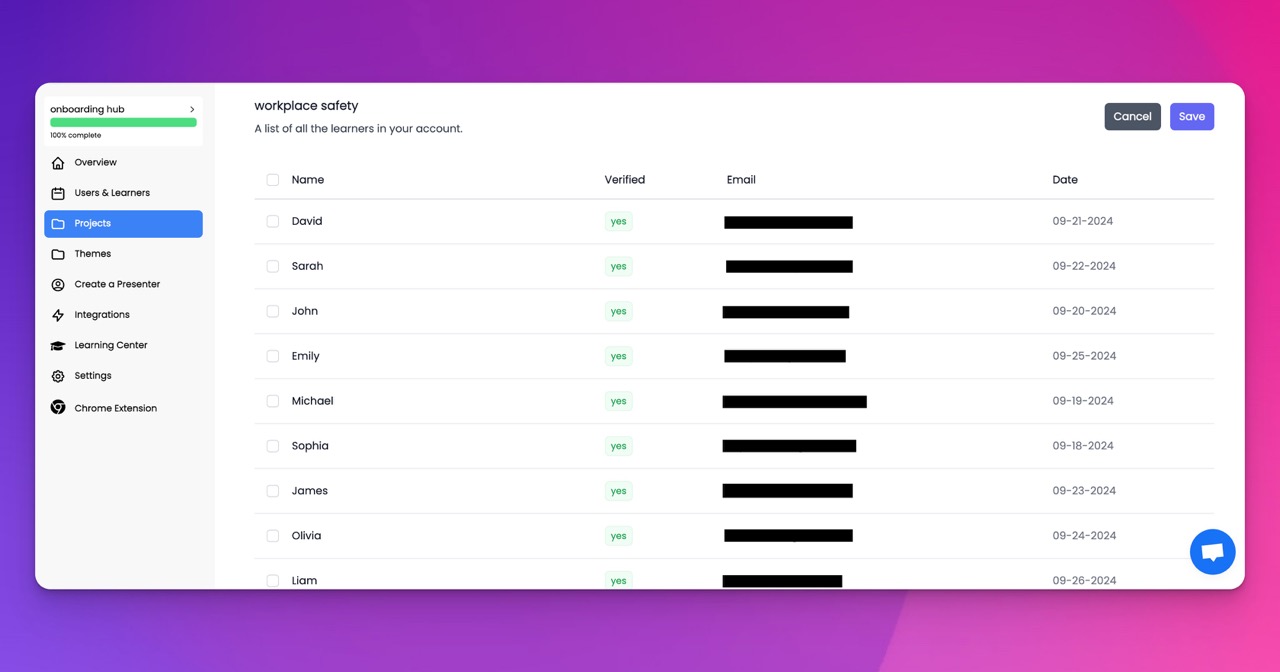🎉 Trainday now integrates with Zendesk and Hubspot 🎉 Trainday now integrates with Zendesk and Hubspot 🎉 Trainday now integrates with Zendesk and Hubspot
🎉 Trainday now integrates with Zendesk and Hubspot
🎉 Trainday now integrates with Zendesk and Hubspot
Contact
Navigating Safety: The Impact of Data-Driven Training in Maritime Port Operations
In the complex and dynamic environment of maritime port operations, ensuring the safety of personnel and efficiency of processes is crucial. "Navigating Safety" explores the significant impact of data-driven training in enhancing safety measures within this sector. By leveraging incident data, performance metrics, and operational feedback, ports can tailor training programs to address specific safety challenges faced by their personnel. This blog post discusses how data-driven approaches to safety training are transforming maritime operations, leading to more informed, prepared, and ultimately safer working environments.
Utilizing Data to Identify Safety Priorities
Effective safety training starts with a deep understanding of the unique risks associated with maritime port operations, which data analysis provides.
Analyzing Incident Reports and Safety Audits
Detailed reviews of incident reports and safety audits offer insights into common hazards and the circumstances that lead to safety breaches. This data helps pinpoint the most critical areas for training focus, such as handling hazardous materials, operating heavy machinery, or navigating busy shipyards.
Feedback from Operations
Gathering and analyzing feedback directly from port workers provides an invaluable perspective on the day-to-day challenges they face. This operational data is crucial for developing training that is not only theoretical but also highly applicable to the real-world scenarios workers encounter.
Crafting Targeted Training Modules
With a clear understanding of the specific risks, training can be specifically tailored to effectively address and mitigate these issues.
Scenario-Based Training
Creating training modules based on real-life scenarios that have occurred within the port or similar environments helps bridge the gap between theoretical knowledge and practical application. These scenarios enable workers to practice their response to emergencies in a controlled, educational setting, enhancing their preparedness for actual events.
Skills Enhancement for Safety-Critical Tasks
Focusing on skill enhancement for tasks that have been identified as high-risk ensures that workers are adequately prepared to handle these duties safely. For instance, if data shows a high rate of accidents involving cargo loading, specialized training can be developed to improve safety in these operations.
Enhancing Engagement Through Interactive Learning
Interactive learning techniques are essential for maintaining worker engagement in safety training, leading to better retention of safety practices.
Hands-On Practice Sessions
Incorporating hands-on practice sessions into training programs allows workers to apply what they've learned in a practical setting, reinforcing their skills and understanding of safety protocols. This method is particularly effective for complex tasks that require a high level of coordination and attention to detail.
Collaborative Learning Environments
Promoting collaborative learning environments where workers can share experiences and solutions to safety challenges fosters a more inclusive approach to safety training. This collaboration not only enhances learning outcomes but also builds a stronger safety culture within the port.
Continuous Improvement of Safety Training
Adapting training programs based on continuous data collection and analysis ensures that safety training remains relevant and effective over time.
Regular Updates Based on New Data
As new safety data is collected, training programs should be regularly updated to reflect the latest findings and best practices. This ongoing process helps ports stay ahead of potential safety issues and ensures that all training is aligned with current industry standards.
Feedback Mechanisms for Enhancement
Implementing mechanisms for collecting feedback on the effectiveness of training programs allows for continuous refinement. This feedback is essential for identifying areas where training may be lacking and for acknowledging changes in operational practices that might necessitate updates in training content.
Conclusion
"Navigating Safety: The Impact of Data-Driven Training in Maritime Port Operations" highlights the critical role of data in developing effective safety training within the maritime industry. By focusing on real-world data to guide training development, maritime ports can ensure their safety measures are as robust and effective as possible. This strategic approach not only protects individuals but also enhances overall operational efficiency, contributing to a safer and more productive maritime environment.
Accelerate Compliance.
Deliver OSHA-Ready Courses Instantly.
Empower your team with data-driven training solutions tailored to your industry's safety standards. Stay compliant, reduce risks, and boost productivity with AI-powered course creation.
